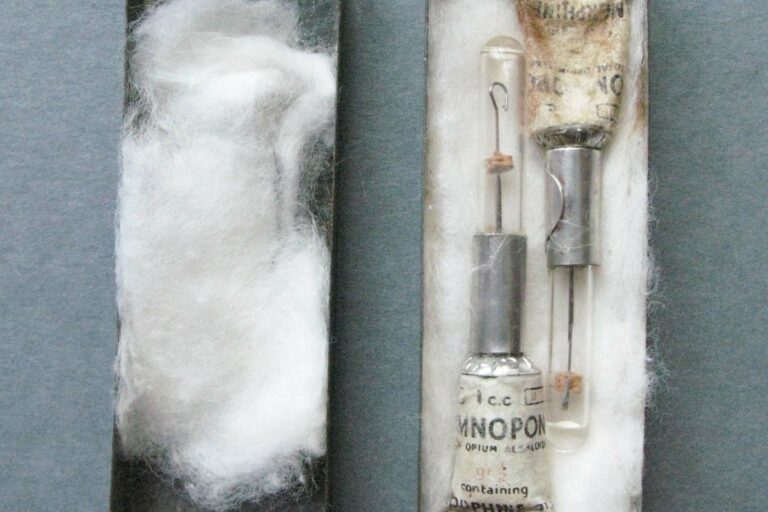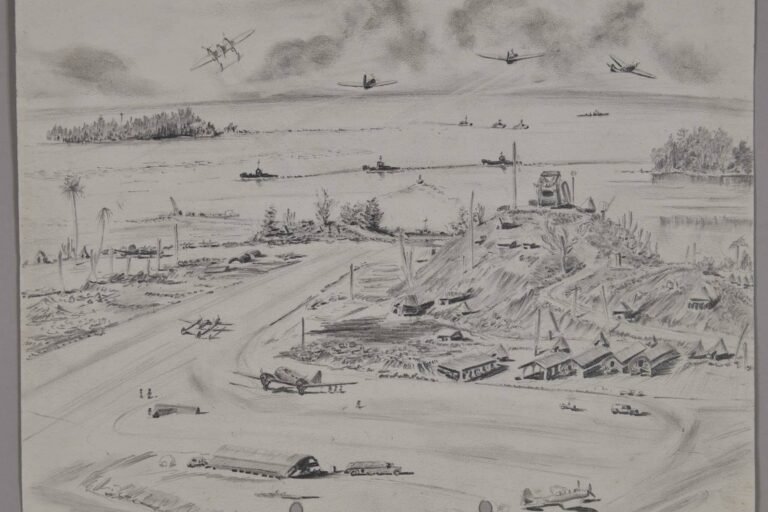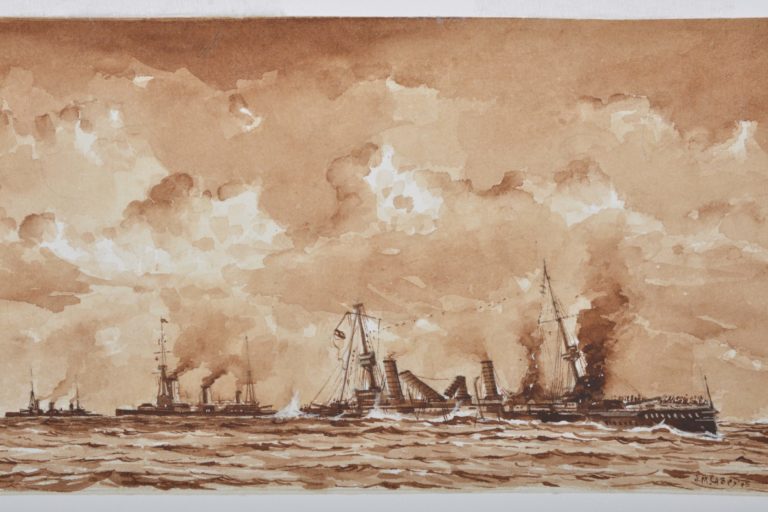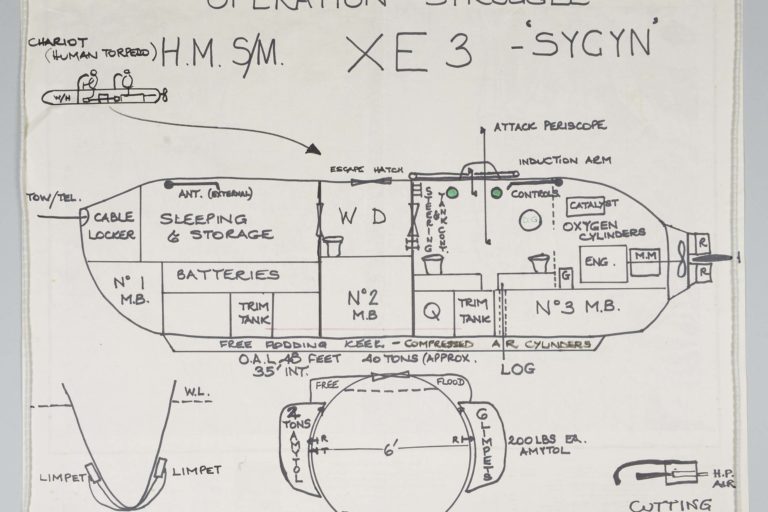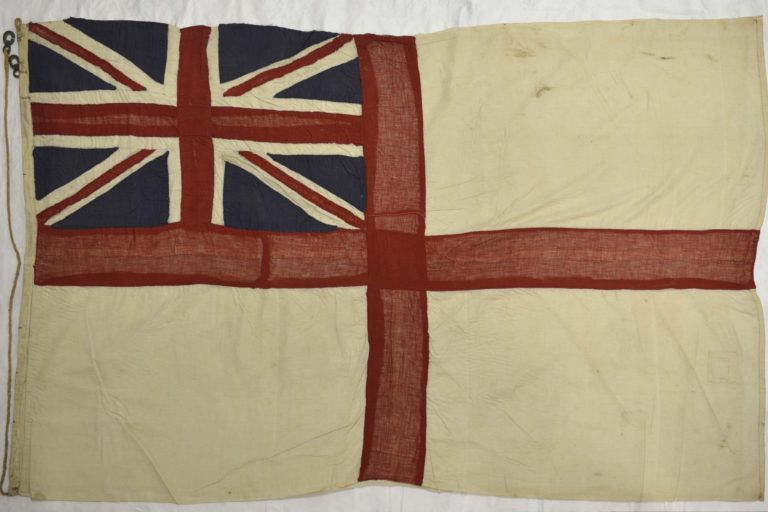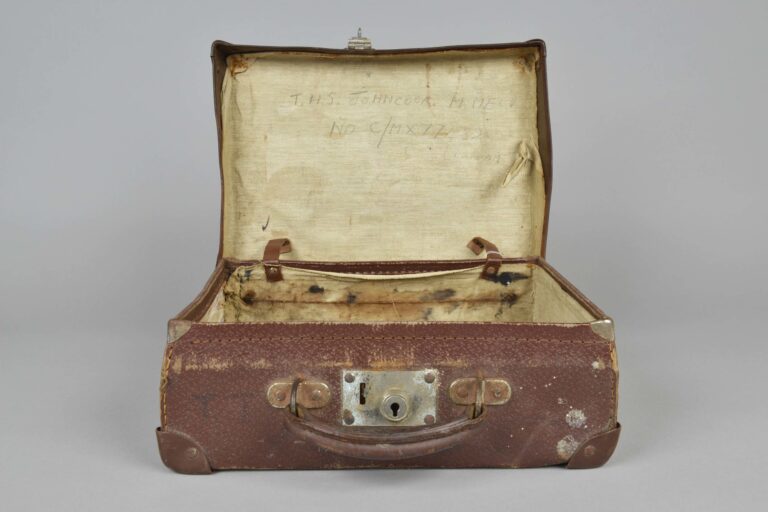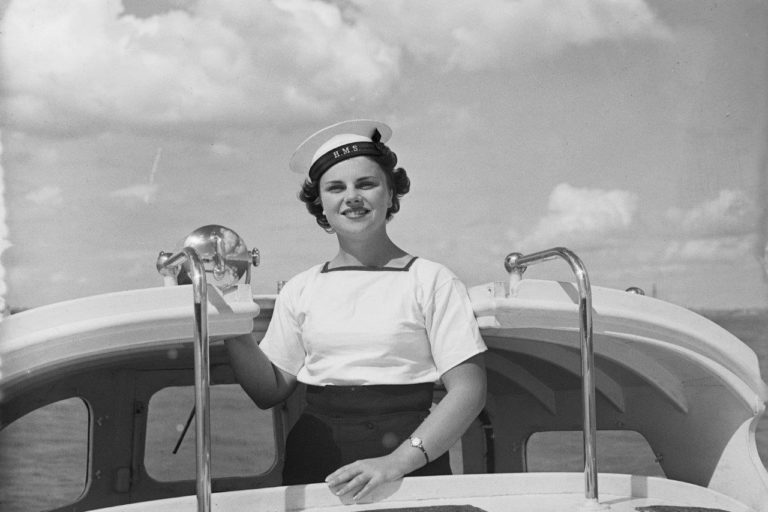The Beginning
In October 1924, the New Zealand Division of the Royal Naval Volunteer Reserve was established, corresponding with the Royal Naval Volunteer Reserve in the United Kingdom. On 17 November 1924 Commander Middleton was appointed Commander of the RNVR(NZ), with rapid recruiting through 1925 using the Royal New Zealand Yacht Squadron as Headquarters.
The Division went on to provide a very large portion of New Zealand’s contribution to Royal Navy and later Royal New Zealand Navy personnel during World War II.
Recruitment for the NZ Division of the Royal Navy based at the Naval Base at Devonport was a struggle, contrasted with the rapid growth of the Auckland Reserve Division.
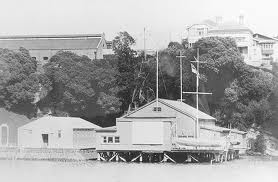
In May 1925, the first parade for the Royal Navy Volunteer Reserve (New Zealand) was held in Shed 14 (the potato storage shed) on the Central Wharf, now the Captain Cook wharf.
The first official duty was to form part of the Honour Guard for the United States Navy Battle Squadron, that was due to visit Auckland in August 1925. The Devonport Naval Base provided two cutters for boat drill. The sailing and pulling training were carried out from the Admiralty Steps in downtown Auckland, while the general seamanship training was carried out in the wharf building.
In 1926 Acting Lieutenant-Commander Charles Henry Tarr Palmer secured the Navy League’s headquarters in Simich’s Building, in what is currently the Downtown carpark, as a base for the newly formed unit parades. Due to the size, the 120 men of the unit were split into two 60-men parades, held on separate nights during the week. This set up would continue until the new headquarters building was opened at St Mary’s Bay. Annual parades would be held over at the Devonport Naval Base.
In November 1927, it was decided to form RNVR divisions in the other main centres. At this time the Auckland Division consisted of 36 officers and 175 ratings. Acting Lieutenant Commander Palmer was Second in Command of the Auckland Division. In May 1927, he took a leave of absence and visited Britain. He volunteered at his own expense to visit the RNVR headquarters and training establishments, to investigate methods of training and administration of volunteer reserves. This offer was accepted by the Navy Board.
When he returned to New Zealand, he produced a report for the Navy Board which advocated a training establishment on the waterfront. Palmer insisted that he be appointed as second-in-command of the Auckland Division, and a new headquarters for the division be built over the sea. The Commodore of the NZ Division of the Royal Navy advised Palmer that if he could obtain a supplementary grant from the government for a new building, he would authorise the construction and manning of a headquarters. Palmer would also be made second in command if he could successfully achieve this.
The Auckland Harbour Board offered what was an ideal site for the new headquarters at St Mary’s Bay. Palmer with assistance from the local Navy League, hosted Prime Minister J.G. Coates and the Defence Minister at the proposed site during a visit to Auckland. Palmer’s persistence and persuasion paid off and he was given a grant of £4,000 to build the headquarters.
The building was based on plans from the RNVR Division Headquarters at Hove, England which Palmer had inspected during his visit to Britain. He discussed this with the Public Works Department who would carry out the construction. He was assisted by regular officers and senior rates from the NZ Division at Devonport. Construction began in 1928, below what is still known today as ‘Jacob’s Ladder’ and it was completed in 1929. During this time, the name of the Division was changed from RNR (D) to the Auckland Division of the RNVR (NZ Division).
On Saturday 1 June,1929 the new headquarters was opened by the Governor-General Sir Charles Fergusson, and the men of the Auckland Division RNVR (NZ Division) marched in and paraded. By the 1930’s the base was a centre of a thriving social and sporting life for the reservists, and home to varied training activities. It also served as the headquarters in 1932, when reservists assisted with policing the Auckland Depression Riot.
Post-1945
The immediate priority after the Second World War was to refit the buildings from their wartime use to classrooms for naval training. In 1947, a Harbour Defence Motor Launch (HDML) was supplied by the War Asset Realisation Board for training purposes. The RNZN requested that the HDML be armed with two .50cal machineguns, one 20mm Oerlikon, and depth charges. The HDML was commissioned as the Ngapona in October 1950. The vessel was duly equipped but the armament was removed in 1955. The shore establishment and the HDML for a period shared the same name, causing some confusion. However, in 1967 the vessel in service was re-named HMNZS Tanmure.
In 1948, there was a major policy change instigated by the Government. The RNZNVR was created with four divisions based in Auckland, Wellington, Christchurch, and Dunedin. With the passing of the Military Training Act in 1949, they took responsibility for men who chose to do their Compulsory Military Training (CMT) in the Navy. One thousand nine hundred and ninety-two men went through this process until 1957.
Origin of the name:
In 1951 the four divisions were given the following names:
HMNZS Ngapona – Auckland
HMNZS Olphert – Wellington
HMNZS Pegasus – Christchurch
HMNZS Toroa – Dunedin
Ngapona comes from the Māori name for Rangitoto’s three summits – Ngā Pona-toru-a-Peretu or the three knuckles of Peretu.
1950s
In November 1950, a plaque was unveiled to commemorate the 44 RNVR [NZD] men who lost their lives during the Second World War.
This was a time of growth and development as men passed through for their CMT and the base was operating with satisfactory numbers of volunteers. Due to the influx of CMT personnel who chose to serve with the Navy, it became urgent to extend the buildings to cope with the training requirements. In 1950 there was speculation that the base would be moved. However, to accommodate the number of personnel, it was decided that training would be spread over three days each week.
In October 1951, a further £6,000 was authorised by the government to extend facilities for training including engineering and electrical workshops. In October 1952, a prefab building arrived from the UK for construction at the base, opening in 1953. This new building consisted of engineering, electrical workshops, sickbay, seamanship, TAS, supply & secretariat classrooms and a theatre. The main building was used for communications and gunnery training.
In July 1954, personnel were issued with cap tallies with the legend HMNZS Ngapona. By 1958, the expansion of Auckland city and development of the North Shore would have a direct impact on the base. Images of the base before the roadworks show the sea reaching to the dock located in front of the main building. This is where the northern motorway is now located.
The old wardroom and gun battery were lost during the construction of the motorway and the building itself had to be moved back several feet. The technical training building was moved behind the HQ building and connected by a covered walkway. In a deal between the RNZNVR and the Ministry of Works carparks and a parade ground were created during the building of the motorway.
1960s
By 1960 the buildings had been refurbished as part of the move with the construction of the motorway. In 1960 a new flagpole was raised on the grass plot. At this time there was a desire to have Ngapona reclassified as a naval establishment.
In April 1961, during the visit of Governor General Viscount Cobham and after the boisterous dinner in the mess, officers decided to fire a 21-gun salute in the early morning at 0245 hours. This naturally upset the neighbours living above the base and resulted in a number of complaints.
In 1963 a new pontoon wharf was towed over to St Mary’s Bay from the Birkenhead Wharf for use by the Naval Reserve. It enabled personnel to work on the Motor Launch without having to travel to HMNZS Philomel (Devonport Naval Base). The pontoon was finally disposed of in the 1980s.
In 1966, the Auckland Harbour Bridge was in the process of being extended. A suggestion was again made that Ngapona move. Over the next 24 years the suggestion was made a number of times, but the building and operation was left where it was. In 1967, reservists upgraded the building including creating a new canteen, new sick bay and upgrading the pontoon. At the same time, the removal and disposal of a large amount of obsolete equipment was organised.
1970 – 2000s
This period was a hard time for the RNZNVR as numbers fell off, but the base was kept in operation despite changes in governments and major political policy change in the 1980s, when New Zealand introduced anti-nuclear legislation.
Reservists in 1987 recovered the propeller from the WW2 minesweeper HMNZS Hinau, and had it mounted to the building. It stood as a memorial to the minesweeper and men of the reserve. Into the 1990s, Ngapona continued to be operate, but the RNZN was aware that it had a limited time to relocate the Auckland Division. In October 2005 Ngapona celebrated its 80th Anniversary in an event which focused on promoting the existence of the Naval Reserve in Auckland and encouraging the recruitment of more volunteer reservists.
Two years later in 2007, the RNZN ordered that the St Mary’s Bay site be closed down. Ngapona was relocated to HMNZS Philomel at Devonport into a building aptly named for Naval Reserve founder, Charles Palmer.
References:
John McEwan, Auckland Rockies: A History of Auckland’s Naval Reserves 1858-1995, Auckland: Pyramid Press, 1995, p. 118.
Charles Palmer Personal Record – Extract from the New Zealand Gazette No. 41, 17 June 1926.
Memo for the New Zealand High Commissioner in London from the Prime Minister’s Office dated 18 May 1927.
R.J McDougall, New Zealand Naval Vessels, Wellington: Government Printing Office, 1989, p. 94.
Grant Howard, The Navy in New Zealand: An Illustrated History, Wellington: Reed, 1981, p. 126.

